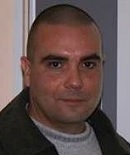
Plenary Lecture
Methods and Tools for Sensors Information Processing

Professor Zlatin Zlatev
Faculty of Technics and Technologies
Trakia University
Bulgaria
E-mail: zlatin.zlatev@trakia-uni.bg
Abstract: The hygienic measurement of food products is one of the important issues underlying the Hazard Analysis and Critical Control Point (HACCP) system. Non-contact methods are a suitable alternative to traditional methods of measuring the parameters of these products at different stages of their production. In addition, most of the methods for assessing the quality and condition of the product include laboratory analyzes requiring breakdown of the measured sample and/or time-consuming and labor-intensive requiring highly qualified staff. During storage, there are various changes in food that inevitably affect their composition and properties, nutritional value and hence quality. The nature and extent of these changes depend on the conditions and duration of storage as well as on the condition of the product. In most cases, these changes are undesirable as they lead to a decrease in the quality of food products. Hence the requirement that storage conditions should be selected so as to exclude or at least minimize unwanted changes. Changes in storage may be due to different processes – physical, chemical, physiological, autolysis, microbiological. In-depth knowledge of these changes is a prerequisite for the proper organization of the storage of food products. Image acquisition, processing and analysis systems can be deployed at different stages of food production and storage. In these cases, camcorders are convenient for use in hazardous environments, where the operator is struggling to monitor the process. The speed of getting images in some video cameras is much higher than that of human vision and they are suitable for tracking and managing fast-changing processes. Visible (VIS) and Near Infrared (NIRS) spectroscopy is a technology primarily used to determine changes in food products composition and to assess its quality. Major applications of spectrophotometric methods in food analysis can be the determination of sensory properties, determination of composition, moisture content, aging and alteration of its storage characteristics. Hyper-spectral analysis systems find applications in solving tasks related to food quality assessment. This method determines the moisture content and distribution of the materials as salt, sugar, the identification of the composition, the presence of impurities. The main advantage of the hyperspectral analysis over the other two image analysis and spectral analysis methods is that a full spectrum is obtained for each scanned point of the object and no pre-knowledge of the sample is required, and complete information on the object is obtained upon further processing. Also, spatial information about the object is obtained, allowing for more accurate segmentation and classification of the image. An experience of using methods mentioned above is described. These optical methods are used for nondestructive analysis of meat and meat products, dairy products, bread and bakery products. A comparative analysis is made of methods for selecting informative color features, reducing the amount of data from spectral characteristics. Methods for selecting informative wavelengths for hyperspectral analysis are discussed. Four classifiers are used Naïve Bayes, kNN, Discriminant analysis and SVM for classification of food products during storage. Mathematical models are expressed that can be used to predict the storage period of food products with sufficient accuracy.
Brief Biography of the Speaker: Zlatin Zlatev is an Associate Professor at the Department of Technics and technologies, Trakia University, Bulgaria. He holds a Bachelor’s degree in Electrical Engineering at the Trakia University and a master and doctorate degree in Process automation at the Ruse University, Bulgaria. Research interests: Computer Aided Design, Informatics, Image processing and analysis